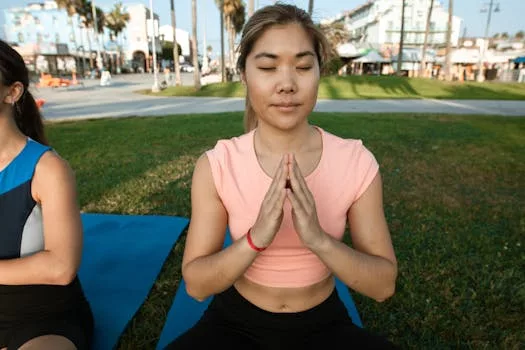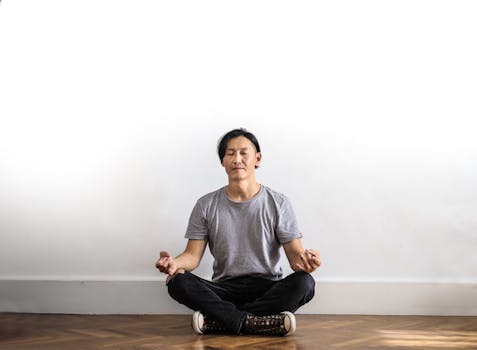
Unlocking Inner Peace: Essential Mindfulness Meditation Techniques
Takeaways: Mindfulness meditation can transform your mental health and overall well-being. By practicing techniques such as breath awareness, body scan, and mindful walking, you can cultivate a deeper connection with the present moment, reduce stress, enhance self-awareness, and improve your emotional resilience.
In this article, we will explore various mindfulness meditation techniques that are accessible to everyone. Whether you are a beginner or an experienced practitioner, these methods can help you navigate the complexities of life with greater ease.
Understanding Mindfulness Meditation

Research has shown that mindfulness meditation can reduce stress, enhance emotional regulation, improve focus, and promote a greater sense of overall happiness. By incorporating mindfulness into your daily routine, you can build resilience against life’s challenges and cultivate a more positive outlook.
Essential Mindfulness Meditation Techniques
1. Breath Awareness Meditation
Breath awareness meditation is one of the simplest and most effective mindfulness techniques. It involves focusing your attention on your breath, observing the natural rhythm of inhalation and exhalation. Here’s how to practice it:
- Find a comfortable seated position, either on a chair or the floor.
- Close your eyes gently and take a few deep breaths to relax.
- Bring your attention to your breath. Notice the sensation of the air entering and leaving your nostrils.
- When your mind wanders (and it will), gently bring your focus back to your breath.
- Continue this practice for 5 to 10 minutes, gradually increasing the duration as you become more comfortable.
2. Body Scan Meditation
Body scan meditation helps cultivate awareness of physical sensations and promotes relaxation throughout the body. This technique can be particularly useful for those who experience tension or stress in specific areas. Here’s how to do it:
- Lie down comfortably on your back, arms relaxed at your sides.
- Close your eyes and take a few deep breaths, allowing your body to relax.
- Begin by focusing on your toes. Notice any sensations—tension, warmth, or relaxation.
- Slowly move your attention up through your body, focusing on each part: feet, legs, hips, abdomen, chest, arms, neck, and head.
- If you notice tension, consciously relax that area as you move your awareness through your body.
- Take your time, spending a few moments on each body part, and aim for a total practice time of 15 to 30 minutes.
3. Mindful Walking Meditation
Mindful walking meditation combines movement with mindfulness, allowing you to experience the present moment while engaging in physical activity. This technique is particularly effective for those who find it challenging to sit still. Here’s how to practice mindful walking:
- Choose a quiet place where you can walk back and forth, preferably about 10 to 20 steps in length.
- Stand still for a moment, taking a few deep breaths to center yourself.
- Begin walking slowly, paying close attention to the sensations in your feet as they make contact with the ground.
- Notice the movement of your legs, the rhythm of your breath, and the environment around you.
- If your mind wanders, gently bring your focus back to the act of walking.
- Practice for 10 to 20 minutes, adjusting your pace and awareness as needed.
4. Loving-Kindness Meditation
Loving-kindness meditation, also known as “Metta” meditation, focuses on cultivating compassion and love for oneself and others. This practice can help improve emotional well-being and foster positive relationships. To practice loving-kindness meditation:
- Find a comfortable seated position and close your eyes.
- Take a few deep breaths and allow yourself to relax.
- Begin by silently repeating phrases such as “May I be happy, may I be healthy, may I be safe, may I live with ease.”
- After a few minutes, shift your focus to someone you care about and repeat the phrases for them.
- Gradually expand your circle of compassion to include neutral individuals and even those you may have conflicts with.
- Spend 15 to 20 minutes in this practice, allowing feelings of love and kindness to fill your heart.
Integrating Mindfulness Meditation into Daily Life

- Set a Regular Practice Time: Consistency is key. Choose a specific time each day to practice mindfulness meditation, whether it’s in the morning, during lunch, or before bedtime.
- Create a Dedicated Space: Designate a quiet, comfortable space in your home for meditation to help you establish a routine.
- Start Small: If you’re new to meditation, begin with just a few minutes each day and gradually increase the duration as you become more comfortable.
- Use Guided Meditations: Many apps and online resources offer guided meditations that can help you stay focused and engaged during your practice.
- Practice Mindfulness Throughout the Day: Look for opportunities to practice mindfulness in everyday activities, such as eating, walking, or even washing dishes.
By incorporating these mindfulness meditation techniques into your life, you can cultivate a greater sense of peace, well-being, and self-awareness. Start your journey towards mindfulness today!





